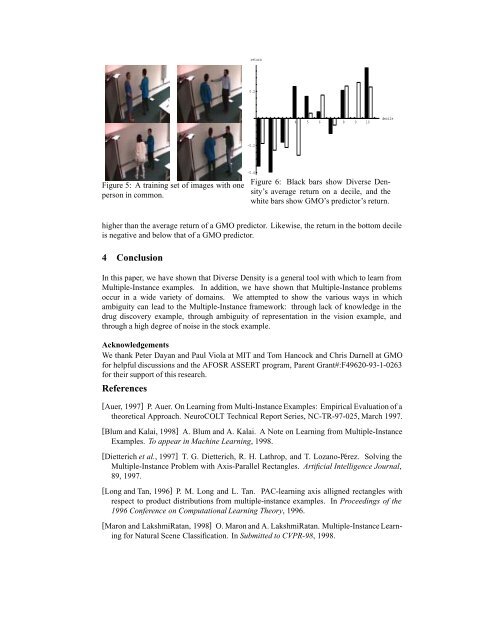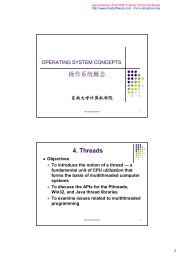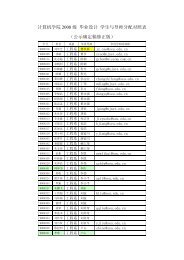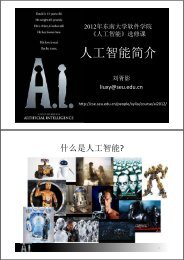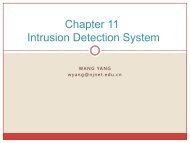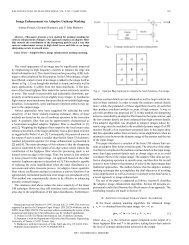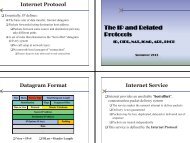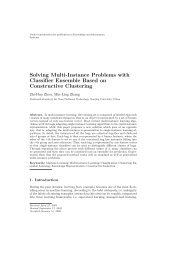A Framework for Multiple-Instance Learning
A Framework for Multiple-Instance Learning
A Framework for Multiple-Instance Learning
- No tags were found...
You also want an ePaper? Increase the reach of your titles
YUMPU automatically turns print PDFs into web optimized ePapers that Google loves.
eturn0.21 2 3 4 5 6 7 8 9 10decile-0.2Figure 5: A training set of images with oneperson in common.-0.4Figure 6: Black bars show Diverse Density’saverage return on a decile, and thewhite bars show GMO’s predictor’s return.higher than the average return of a GMO predictor. Likewise, the return in the bottom decileis negative and below that of a GMO predictor.4 ConclusionIn this paper, we have shown that Diverse Density is a general tool with which to learn from<strong>Multiple</strong>-<strong>Instance</strong> examples. In addition, we have shown that <strong>Multiple</strong>-<strong>Instance</strong> problemsoccur in a wide variety of domains. We attempted to show the various ways in whichambiguity can lead to the <strong>Multiple</strong>-<strong>Instance</strong> framework: through lack of knowledge in thedrug discovery example, through ambiguity of representation in the vision example, andthrough a high degree of noise in the stock example.AcknowledgementsWe thank Peter Dayan and Paul Viola at MIT and Tom Hancock and Chris Darnell at GMO<strong>for</strong> helpful discussions and the AFOSR ASSERT program, Parent Grant#:F49620-93-1-0263<strong>for</strong> their support of this research.References[Auer, 1997] P. Auer. On <strong>Learning</strong> from Multi-<strong>Instance</strong> Examples: Empirical Evaluation of atheoretical Approach. NeuroCOLT Technical Report Series, NC-TR-97-025, March 1997.[Blum and Kalai, 1998] A. Blum and A. Kalai. A Note on <strong>Learning</strong> from <strong>Multiple</strong>-<strong>Instance</strong>Examples. To appear in Machine <strong>Learning</strong>, 1998.[Dietterich et al., 1997] T. G. Dietterich, R. H. Lathrop, and T. Lozano-Pérez. Solving the<strong>Multiple</strong>-<strong>Instance</strong> Problem with Axis-Parallel Rectangles. Artificial Intelligence Journal,89, 1997.[Long and Tan, 1996] P. M. Long and L. Tan. PAC-learning axis alligned rectangles withrespect to product distributions from multiple-instance examples. In Proceedings of the1996 Conference on Computational <strong>Learning</strong> Theory, 1996.[Maron and LakshmiRatan, 1998] O. Maron and A. LakshmiRatan. <strong>Multiple</strong>-<strong>Instance</strong> <strong>Learning</strong><strong>for</strong> Natural Scene Classification. In Submitted to CVPR-98, 1998.


